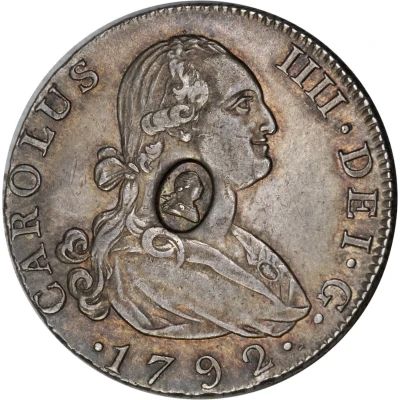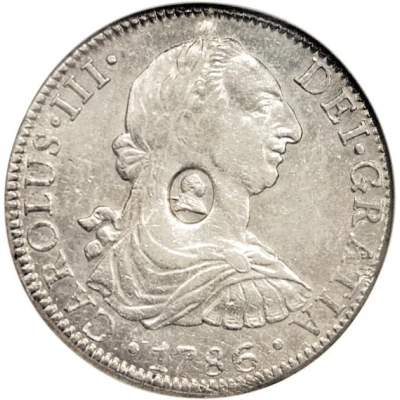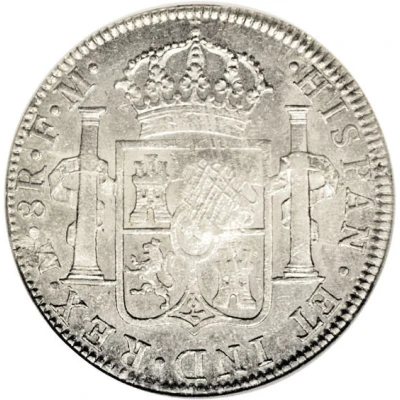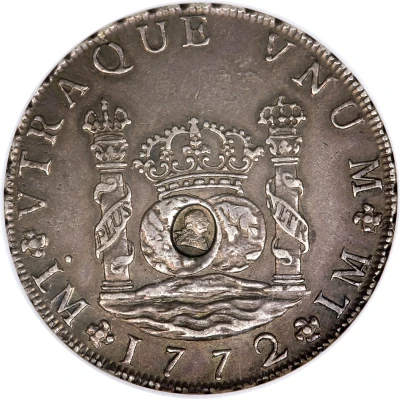
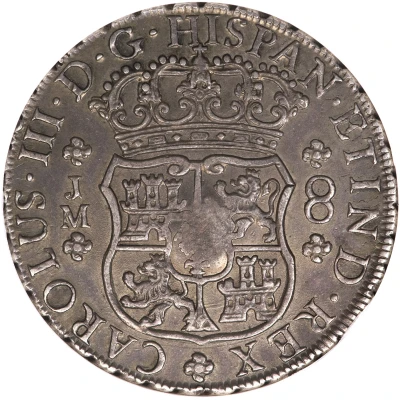

© Heritage Auctions
1 Dollar - George III Type I countermark; oval
| Silver (.917) | 27 g | 39 mm |
| Issuer | United Kingdom (United Kingdom, British Overseas Territories and Crown Dependencies) |
|---|---|
| King | George III (1760-1820) |
| Type | Standard circulation coin |
| Years | 1769-1772 |
| Value | 1 Dollar = 4 Shillings 9 Pence (19⁄80) |
| Currency | Countermarked coinage (1797-1804) |
| Composition | Silver (.917) |
| Weight | 27 g |
| Diameter | 39 mm |
| Shape | Round |
| Orientation | Medal alignment ↑↑ |
| Demonetized | Yes |
| Updated | 2024-10-09 |
| Numista | N#27973 |
|---|---|
| Rarity index | 95% |
Reverse
Crowned shield of arms between engraver's initials and denomination, legend around.
Script: Latin
Lettering:
CAROLVS·III·D·G·HISPAN·ET IND·REX
J
M
8
Translation: Carlos the Third by the Grace of God King of Spain and the Indies
Comment
Countermarked CoinageEmergency issue consisting of foreign silver coins, usually Spanish Colonial, having a bust of George III within an oval (1797) or octagonal (1804) frame. Countermarked 8 Reales circulated at 4 Shillings 9 Pence in 1797 and 5 Shillings in 1804. The puncheons used for countermarking foreign coins for this series were available for many years afterward, especially the oval die and apparently a number of foreign coins other than Spanish or Spanish Colonial 8 Reales were countermarked for collectors.
Issuer: Bank of England; Countermark: Oval, Type I; Date: Dates shown are of the host coin;
Countermarked on Peru (Lima) 8 Reales of Carlos III, KM#64.
For more detail on these emergency issues,
please read THE BANK OF ENGLAND COUNTERMARKED DOLLARS, 1797-1804 by H.E. Manville.
Interesting fact
One interesting fact about the 1769-1772 George III Type I countermark; oval) 1 Dollar coin from the United Kingdom is that it was made with a unique silver alloy that contains 91.7% silver, which is higher than the standard 90% silver content used in many other coins of the time. This higher silver content gives the coin a distinctive bright white color and makes it stand out from other coins in circulation.
